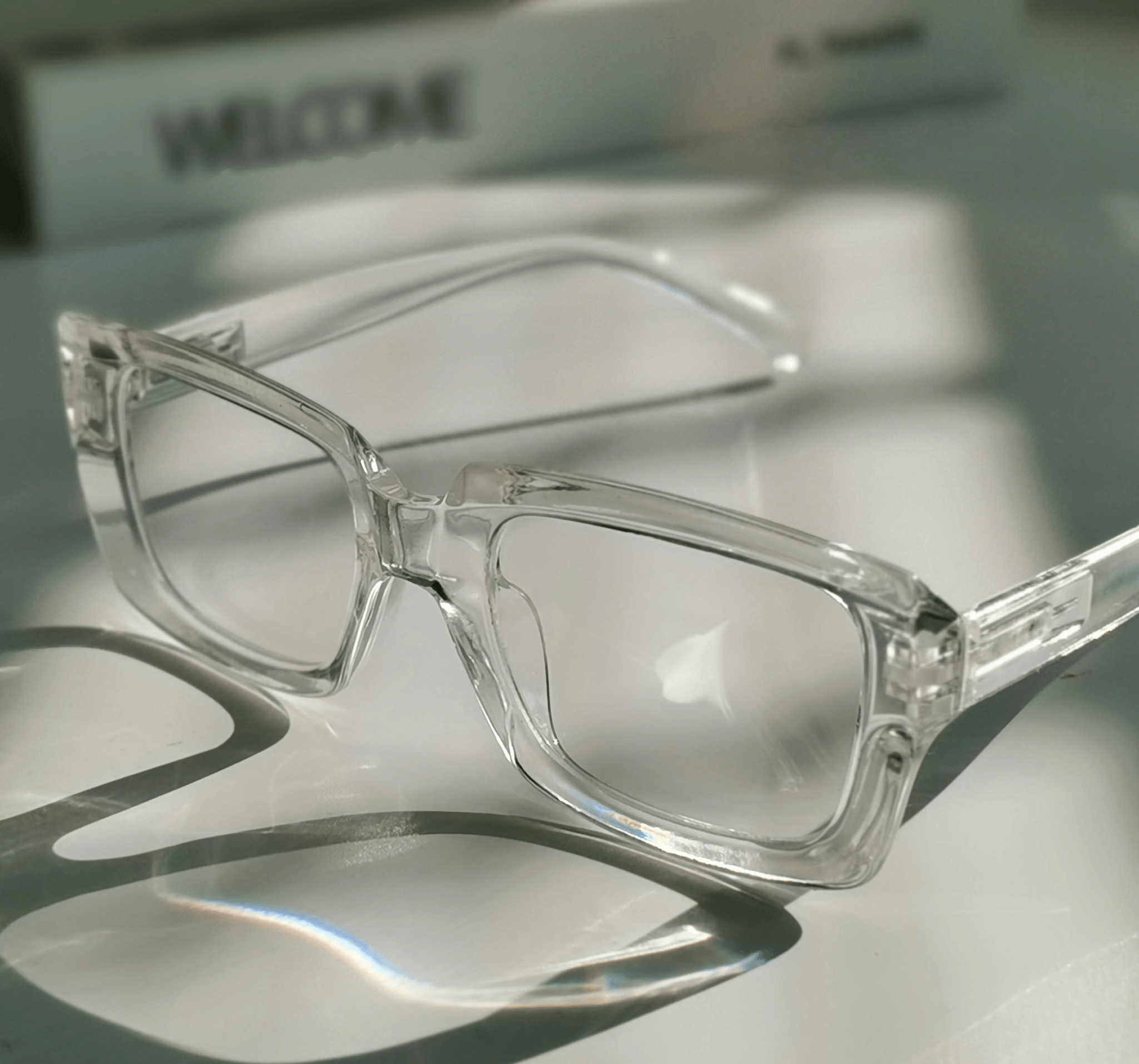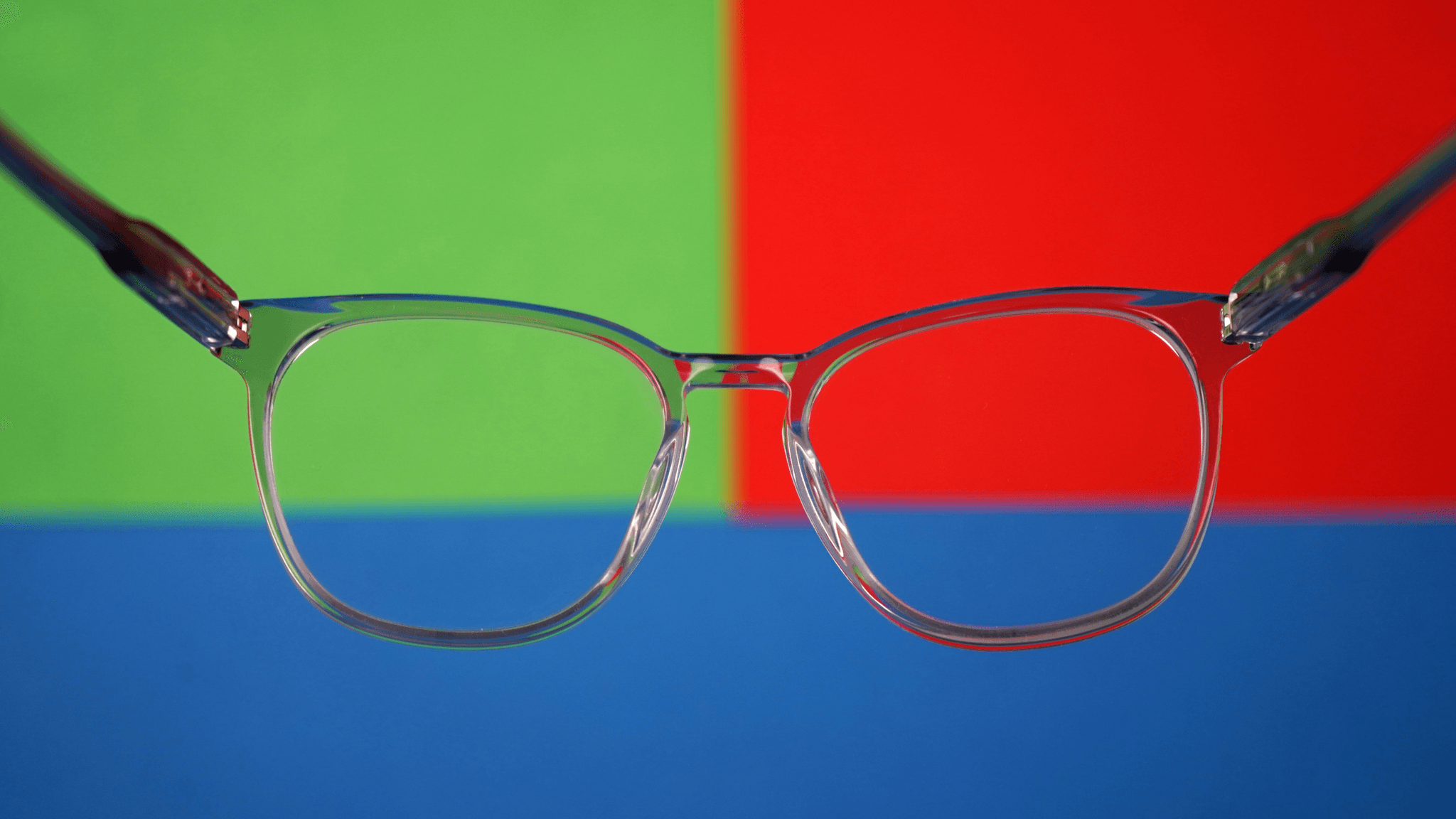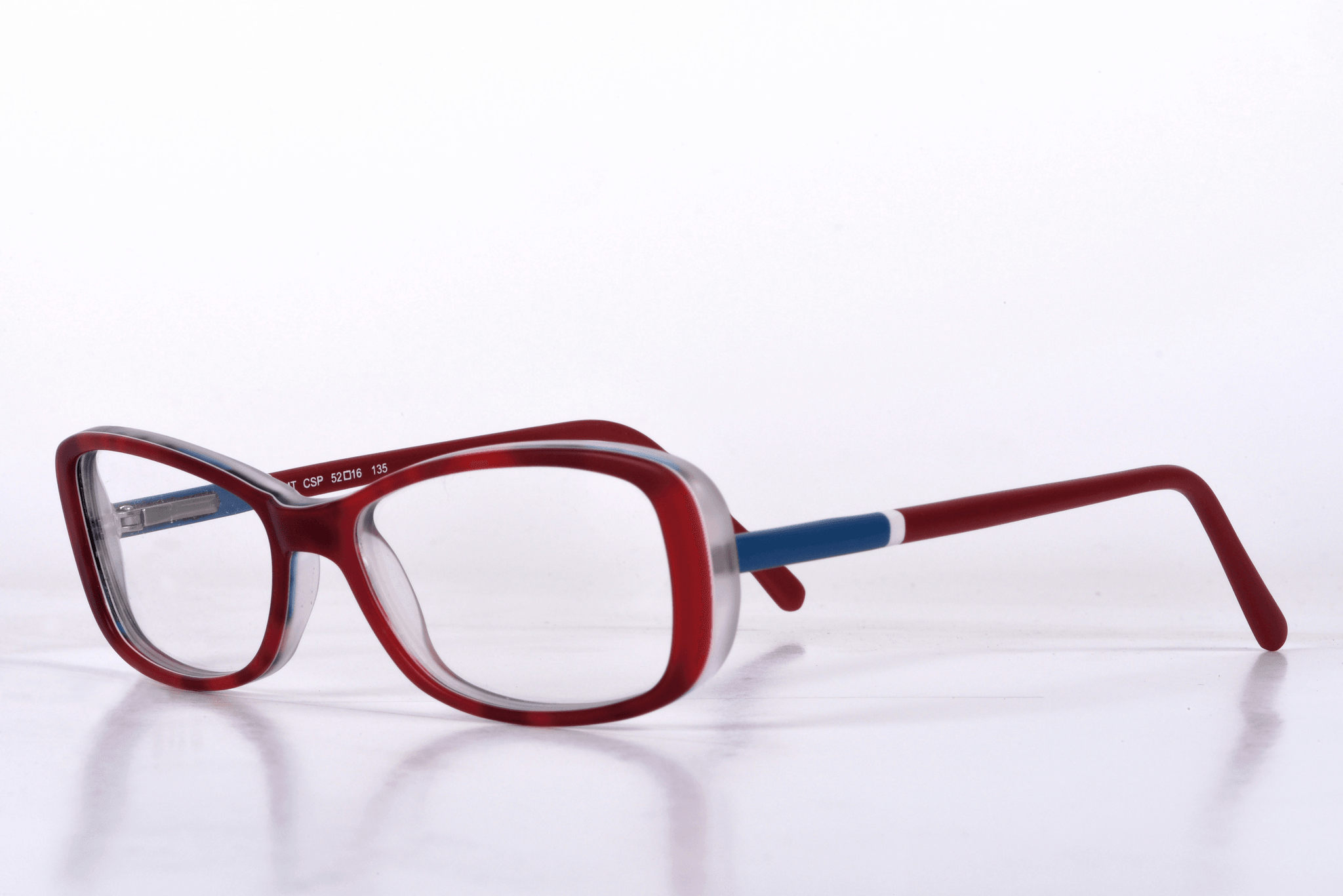Introduction

Choosing the right eyewear goes beyond mere aesthetics; it’s a journey into the fascinating world of materials that make up your glasses. From understanding what are glasses lenses made of to exploring what material is a lens made of, this guide aims to shed light on the essential components that contribute to both functionality and style in eyewear. Whether you’re pondering whether lenses are plastic or glass or curious about the best material for your eyeglass lenses, we’ll cover all bases.
Understanding Glasses Materials
The materials used for both lenses and frames play a crucial role in determining comfort, durability, and visual clarity. So, what are glasses lenses made of? Typically, they can be crafted from glass or various types of plastic, each offering unique advantages that cater to different needs and lifestyles.
Importance of Choosing the Right Lenses
Selecting the right lenses is paramount for optimal vision correction and overall comfort. Are lenses plastic or glass? This question often arises because each option has distinct pros and cons that can significantly impact your experience with eyewear. By understanding what material is best for eyeglass lenses based on your prescription type and lifestyle habits, you can make an informed choice that enhances your daily life.
Exploring Frame Materials
Just as critical as lens selection is understanding what are glasses frames made of. Frames can be constructed from a variety of materials including metal alloys and plastics like acetate—which not only affect durability but also influence style and fit. With an increasing focus on sustainability in fashion, many brands are now offering eco-friendly frame options that appeal to environmentally conscious consumers looking for quality without compromise.
What are Glasses Lenses Made Of?

Glass vs. Plastic Lenses
The classic debate of are lenses plastic or glass? often boils down to personal preference and usage scenarios. Glass lenses offer superior optical clarity and scratch resistance, making them a favorite among those who prioritize visual quality above all else. However, they tend to be heavier and more prone to shattering compared to their plastic counterparts, which is where plastic lenses shine with their lightweight nature and resilience.
Plastic lenses have become increasingly popular due to their versatility and affordability. They generally weigh less than glass lenses while providing adequate optical performance for most users. In addition, modern advancements have allowed for the creation of high-quality plastic lenses that can rival glass in terms of clarity—making it essential for you to consider what material is best for eyeglass lenses based on your lifestyle.
Advantages of Polycarbonate Lenses
Polycarbonate lenses are often hailed as a game-changer in eyewear technology—so what makes them so special? These lenses are not only lightweight but also incredibly impact-resistant, making them an excellent choice for children or anyone with an active lifestyle. Furthermore, polycarbonate offers built-in UV protection, which is a significant bonus when considering eye health.
If you're wondering if glasses lenses are made of plastic or if there’s something better out there, polycarbonate might just be your answer! They provide a perfect balance between durability and comfort without sacrificing visual quality. Plus, they can be easily tinted or coated for added functionality like anti-reflective coatings or blue light blocking features.
High Index Lenses for Strong Prescriptions
For those who require stronger prescriptions, high index lenses come into play as a fantastic option worth exploring when asking what material is a lens made of? These specialized lenses are designed to bend light more efficiently than standard options, allowing them to be thinner and lighter while still providing excellent vision correction. This means you won’t have to deal with thick frames that make you look like you’re wearing soda bottles!
High index materials come in various grades; the higher the index number, the thinner the lens can be created without compromising its strength or clarity. This makes them particularly appealing for individuals who need higher prescriptions but want stylish frames without excessive bulkiness—an ideal solution when pondering what lens are eyeglasses made up of? Ultimately, choosing high index lenses could elevate both comfort and aesthetics in your eyewear journey.
Are Lenses Plastic or Glass?

Pros and Cons of Glass Lenses
Glass lenses have long been a staple in the eyewear industry due to their optical clarity and scratch resistance. However, they come with their own set of challenges; for instance, glass is heavier than plastic, which can lead to discomfort during extended wear. Additionally, while glass lenses offer superior visual quality, they are more prone to shattering upon impact—definitely not ideal for the clumsy among us!
Benefits of Plastic Lenses
Plastic lenses have gained immense popularity in recent years, largely due to their lightweight nature and affordability. They are generally more impact-resistant than glass, making them a safer option for active lifestyles or for kids who might be prone to accidents. Plus, plastic lenses can easily be coated with various treatments like anti-reflective or blue light-blocking coatings—perfect for those who spend hours staring at screens!
The Hybrid Option: Trivex Lenses
If you're torn between plastic and glass, Trivex lenses may just be the answer you've been searching for! This innovative material combines the best features of both types: it’s lightweight like plastic but offers superior optical clarity akin to glass. So if you're asking yourself what material is best for eyeglass lenses that provide both comfort and performance, Trivex might just take the cake.
What Material is Best for Eyeglass Lenses?

Comparison of Lens Materials
There are primarily three types of materials used in eyeglass lenses: glass, plastic, and polycarbonate. Glass lenses are known for their excellent optical clarity and scratch resistance but can be heavy and prone to shattering. On the other hand, plastic lenses are lightweight and more impact-resistant but may scratch more easily unless treated with a protective coating. Polycarbonate offers the best of both worlds—it's lightweight and highly durable, making it ideal for children or active individuals.
When considering Are lenses plastic or glass? it's essential to weigh the pros and cons of each option. High-index lenses offer another alternative; they are thinner than traditional plastic or glass options while providing excellent vision correction for stronger prescriptions. Ultimately, comparing these materials will help you determine which type aligns with your visual needs.
Considerations for Your Lifestyle
Your lifestyle plays a significant role in deciding what material is best for eyeglass lenses. For instance, if you're an active person who enjoys sports or outdoor activities, durability should be a priority—this makes polycarbonate or Trivex a smart choice due to their impact resistance. Conversely, if you spend most of your time indoors with minimal risk of damage to your eyewear, traditional plastic or high-index glass could work well.
Additionally, consider how often you wear glasses daily; if you're wearing them all day long at work or school, comfort becomes crucial too! Lighter materials such as plastic or polycarbonate will reduce fatigue on your nose bridge compared to heavier glass options. Remember that understanding what material is a lens made of can significantly enhance both comfort and functionality.
Recommendations Based on Prescription Types
Different prescriptions call for different lens materials; therefore understanding what lens are eyeglasses made up of is vital when choosing yours! For mild prescriptions (up to +/- 2), standard plastic lenses usually suffice without much fuss. However, if you have a stronger prescription (beyond +/- 2), high-index lenses become essential as they minimize thickness while maximizing clarity.
If you're frequently exposed to screens—whether from work or leisure—consider specialty coatings like blue light blocking features that enhance visual comfort regardless of the underlying lens material used (be it plastic or glass). In summary: whether you're asking What material is best for eyeglass lenses? or Are glasses lenses made of plastic?, the answers hinge upon individual needs and preferences.
What Material is a Lens Made Of?

Breakdown of Common Lens Materials
Glasses lenses are primarily made from three common materials: glass, plastic, and polycarbonate. Glass lenses offer excellent optical clarity but can be heavier and more prone to shattering than their plastic counterparts. Plastic lenses, on the other hand, are lighter and more impact-resistant, making them a popular choice for everyday wear—especially if you're wondering whether are lenses plastic or glass?
Polycarbonate lenses take things up a notch with their high durability and lightweight properties, making them ideal for active lifestyles or children's eyewear. Additionally, Trivex is another material gaining popularity due to its similar benefits while offering even better optical clarity than standard polycarbonate options. So when you ask yourself what material is a lens made of? Remember that each type comes with its own set of advantages.
Specialty Lenses: Photochromic and Blue Light Blocking
For those who spend long hours in front of screens or frequently transition between indoor and outdoor environments, specialty lenses like photochromic or blue light blocking options might be worth considering. Photochromic lenses automatically adjust their tint based on UV exposure—meaning they darken outdoors but remain clear indoors—making them incredibly versatile for daily use. If you're curious about what lens are eyeglasses made up of beyond standard options, these specialty choices offer added functionality.
On the flip side, blue light blocking lenses filter out harmful blue light emitted by screens which can contribute to digital eye strain—a common ailment in our tech-driven world. Both types enhance comfort while providing protection against varying lighting conditions and screen exposure; thus contributing significantly to your overall eyewear experience.
How Lens Coatings Enhance Performance
Now that we've explored what material is best for eyeglass lenses based on types alone let’s discuss how lens coatings can elevate performance even further! Anti-reflective coatings reduce glare from surfaces like computer screens or headlights at night—making your vision clearer under challenging lighting conditions. Similarly, scratch-resistant coatings extend the lifespan of your glasses by protecting against everyday wear and tear.
Moreover, some coatings provide additional benefits such as UV protection or hydrophobic properties that repel water and smudges—keeping your vision pristine no matter where life takes you! So when pondering whether glasses lenses are made of plastic or glass consider also how these enhancements play a vital role in optimizing both functionality and comfort.
What are Glasses Frames Made Of?

Metal Frames: Aluminum vs. Titanium
Metal frames are often celebrated for their durability and sleek appearance, with aluminum and titanium being two popular choices. Aluminum frames are lightweight and offer a modern aesthetic but may not be as robust as their titanium counterparts. Titanium frames, on the other hand, boast incredible strength while remaining lightweight—perfect if you're wondering what material is best for eyeglass lenses that need a sturdy frame to support them.
Both aluminum and titanium can be treated to resist corrosion, making them great options for everyday wearers. If you're concerned about comfort while wearing glasses all day, you'll find that many metal frames come with adjustable nose pads for a personalized fit. So when asking yourself Are lenses plastic or glass? remember that a sturdy metal frame can pair well with either lens type.
Plastic Frames: Acetate and Injected Plastic
Plastic frames have gained popularity due to their versatility in design and color options—perfect if you want your eyewear to make a statement! Acetate is a high-quality plastic derived from natural sources; it's lightweight yet durable and allows for vibrant colors and patterns that can elevate any look. Injected plastic frames tend to be more affordable but may lack some of the customizability offered by acetate.
While exploring what material is a lens made of might lead you down one path, don't overlook how important frame material is in achieving overall comfort and style! Plastic frames can also provide flexibility without sacrificing strength; this means they’re less likely to break under pressure compared to some metal varieties. Plus, many people wonder if are glasses lenses made of plastic, which makes these types of frames an excellent match!
The Rise of Sustainable Frame Materials
In recent years, there has been an exciting shift towards sustainable materials in eyewear manufacturing—a trend that's hard to ignore! Brands are increasingly utilizing recycled plastics or bio-based materials that reduce environmental impact while still delivering stylish options for consumers eager to make eco-friendly choices. This movement toward sustainability not only answers the question of what are glasses frames made of but also reflects growing consumer awareness about our planet.
Sustainable materials often combine aesthetics with functionality—think trendy styles crafted from renewable resources that appeal to eco-conscious shoppers everywhere! As we contemplate which lenses work best with our chosen frame styles—whether pondering What lens are eyeglasses made up of? or considering specific prescriptions—it’s essential not just how those lenses perform but also how they align with our values regarding sustainability.
In summary, whether you lean towards metal or plastic options—or even sustainable alternatives—the choice ultimately boils down to personal preference combined with practical needs like durability and comfort during daily wear.
Conclusion

In the world of eyewear, the choices can feel overwhelming, but understanding what are glasses lenses made of and how they cater to your unique vision needs is crucial. Selecting the right lenses is not just about aesthetics; it’s about enhancing your daily life, whether you’re working at a computer or enjoying a sunny day outdoors. With various materials available, from traditional glass to modern plastics and hybrids, you can find the perfect fit for comfort and clarity.
Choosing the Right Lenses for Your Needs
When considering what material is best for eyeglass lenses, think about your lifestyle and specific vision requirements. Are lenses plastic or glass? Each has its own set of advantages that cater to different activities—glass offers superior optical clarity while plastic is lighter and more impact-resistant. It’s essential to weigh these factors carefully; after all, your eyewear should enhance both your sight and style.
Finding the Perfect Frames for Comfort
The question of what are glasses frames made of also plays a significant role in comfort and durability. Metal frames can provide a sleek look but might not be suitable for everyone due to weight or allergies; meanwhile, plastic options like acetate offer flexibility and vibrant colors but can be less durable over time. Ultimately, finding frames that complement both your face shape and personal style will elevate your eyewear experience.
Daposi: Elevate Your Eyewear Game
Daposi understands that every detail matters when it comes to eyewear—what lens are eyeglasses made up of? The answer lies in a diverse selection designed for various needs, ensuring you don’t compromise on quality or style. With an emphasis on innovative materials like Trivex and sustainable frame options, Daposi invites you to explore how modern technology meets fashion in an eye-catching way.
